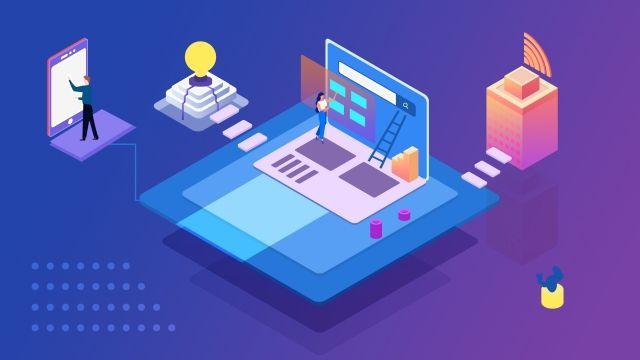How To Create A Positive Employee Experience (In The Digital Age)

LIKE.TG 成立于2020年,总部位于马来西亚,是首家汇集全球互联网产品,提供一站式软件产品解决方案的综合性品牌。唯一官方网站:www.like.tg
The revolution in the workplace brought on by new technologies has created a raft of new digital jobs. Corporate culture has changed as a result. Novel approaches to work communication and employee engagement are now needed. There are many innovative tools that can be used in the workplace to create a positive employee experience.
Improving employee experience doesn't
need to be difficult - or expensive!
The Digital Age
In the digital age, the whole economy is based around IT. The fast flow of information provided by new technologies enables the entire society to function. The digital revolution has changed every facet of the human experience. The workplace, especially, has been changed forever. The COVID-19 pandemic undeniably sped up technological transformations in the workplace. With people unable to interact at work, many remote and digital jobs were created.
This changes everything about the way that people work. Work culture and work organization are going to be hugely influenced by these changes. This means that companies need to find new ways of ensuring employee satisfaction and creating social ties within work teams. This is essential for retaining staff. If an employee is working remotely and feels completely detached from their team, they are much more likely to leave a company.
Dialogue With Employees
There is a saying among HR experts that goes, “There is no golden rule for every business”. For a company to create a tailor-made solution, it must study the problem carefully.
Only constant communication with employees will allow management to keep track of what is happening. Everybody in the digital age is dealing with feelings of constant change and uncertainty. For effective communication, two-way dialogue is essential.
Engaging Employees In The Digital Age
There are a number of factors that will help you to engage employees.
Give Regular Feedback
One of the most basic tools for creating two-way dialogue is creating a culture of feedback. This is a way of rewarding positive work behaviors and letting people know where they can improve. Giving feedback can help to create a sense of safety at work. It will help employees to feel appreciated and will increase their job satisfaction.
Engaging in regular conversations with employees can help to activate and motivate them. Creating a culture of feedback will make people feel that they are allowed to express opinions openly. Team members will be more likely to share how much they are enjoying work or that they are struggling and need some assistance.
Carry Out An Employee Satisfaction Survey
This can end up being a big project due to the large number of research areas and the potential volume of the data that is obtained. If the survey is conducted well, it can provide a ton of information on key areas that may need to be examined.
You can learn about the levels of cooperation, communication, team morale, work atmosphere, organizational issues, professional development, work satisfaction, and employee relations with their superiors.
This is only going to be effective if management is actually willing to listen to the employee feedback and make the appropriate changes. This will help employees to feel like they are actually an influence within their company. They are then likely to feel more attached and loyal.
Work On Staff Development
There are many different approaches to staff development. This can include building a clear career path within the company, mentoring and coaching programs, and planning ways for upskilling and development.
These tools obviously need to be adapted according to the size of the company, the capabilities of team members, and the company goals. Learning and development can be key to helping employees feel motivated at work. It helps people to have a sense of meaning.
Build Remote Integration
Building a team that is going to be loyal, committed, hardworking, and ready to make sacrifices requires building friendships at work. Companies need to realize the utmost importance of building relationships. Let’s look at some ways to achieve this in the digital age.
4. Mutual trust
The efficiency and success of any company are built on the mutual trust of the process participants. The company wants to trust its employees, from top management to line staff. Employees, in turn, want to trust management at all levels and, most importantly, each other.
People spend a lot of time, effort, and emotions defending their positions and decisions. Team members solve a collective problem every day, and there is a constant mutual intersection. Without trust, employees begin to control and double-check each other's work. There is an unhealthy industrial atmosphere, sometimes open hostility. There is no productive communication.
As a result, the desire to do their job disappears, motivation drops, and, ultimately, the staff either ceases to be responsible for their duties or simply quits.
Collaboration in a team with trusting relationships is built quite differently. People are focused on personal matters, as there are no distractions. Warm, friendly relations are established in the team. High-quality communication develops into active cooperation and partnership. As a result, the team works cohesively and creatively and is aimed at a common result.
Tools To Increase Employee Engagement
Digitization may be a threat to the more social aspects of work culture. However, there are a number of tools that can help employees to interact and build relationships.
Employee Experience Platforms
Platforms such as LIKE.TG can be used to show appreciation for employees' hard work. This kind of employee engagement software can be used to engage individuals and whole teams. These platforms can be used in every stage of the employee lifecycle. This includes onboarding, career advancement, and staff retention. These platforms are designed to provide a positive employee experience and drive business results.
Learning Management Systems
These are applications that can help to support employee development and remote work. These apps can manage training courses, track the skill progression of team members, and identify any areas that may need improvement.
Benefit Systems
This can include cafeteria systems where employees can get lunch without leaving work, possibly paid for by the company. Investing in employee development and increasing their skill set is another benefit system.
There could also be systems in place for car-sharing, sharing parking spaces, or ordering lunch to work.
The Employee Lifecycle
Let’s take a look at different stages of the employee lifecycle and how they can be supported to have a positive experience.
The Onboarding Process
Onboarding gives companies the chance to form deep and long-lasting relationships with employees from day one. A successful onboarding strategy will help new team members to feel engaged and motivated. The focus should be primarily on the experience of the employee.
In the digital age, technology can be used to help new employees to connect with their peers. Technology can be used to outline objectives and to give and receive feedback. Platforms such as LIKE.TG will help new employees to become immersed in the company culture and positively interact with all of their new team members.
Career Development
Today there are many technological solutions that will help to measure employee progress and plan their development. These digital feedback solutions allow for the creation of a culture of constant feedback. These solutions can help to create continuous improvement in the workplace.
Digital solutions can generate relevant data so that companies can clearly see and understand how each employee is engaging with the company. This data can be used to create a positive employee experience.
The Learning Experience
In the digital age, learning has been revolutionized. There are many interactive resources and AI systems that make it much easier to give a more personalized learning experience.
In the digital age, employees can take an active role in their own learning. Constant digital transformation means that employees need to be able to “relearn” quickly. We are immersed in a world that is rapidly changing. New technologies are emerging all the time. Choosing what to learn is essential.
In Summary
In the digital age, the whole economy is based on IT. The world is changing at a rapid rate. Many people are now working remotely. It is essential to create a two-way dialogue with employees. This can be achieved by giving regular feedback, carrying out satisfaction surveys, working on staff development, and building remote integration.
There are a number of tools that can help to increase employee engagement and create a positive experience. This includes employee experience platforms, learning management systems, and benefits systems.
Technology can be utilized to ensure that employees have a positive onboarding process, that their career development progresses smoothly, and that they have a personalized learning experience.
About Author: This article is written by our marketing team at LIKE.TG. LIKE.TG is dedicated to providing powerful solutions for your HR teams and creating an exceptional employee experience. Our aim is to help your company improve employee engagement, onboarding, and to save you valuable time!

LIKE.TG 专注全球社交流量推广,致力于为全球出海企业提供有关的私域营销获客、国际电商、全球客服、金融支持等最新资讯和实用工具。免费领取【WhatsApp、LINE、Telegram、Twitter、ZALO】等云控系统试用;点击【联系客服】 ,或关注【LIKE.TG出海指南频道】、【LIKE.TG生态链-全球资源互联社区】了解更多最新资讯
本文由LIKE.TG编辑部转载自互联网并编辑,如有侵权影响,请联系官方客服,将为您妥善处理。
This article is republished from public internet and edited by the LIKE.TG editorial department. If there is any infringement, please contact our official customer service for proper handling.


















